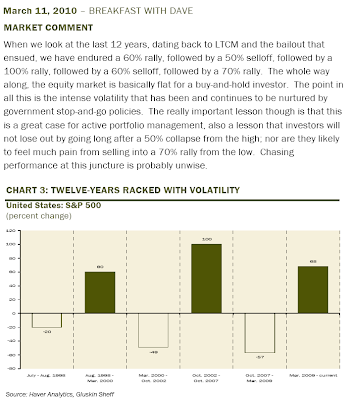LINK : THE MARGINAL PRODUCTIVITY OF DEBT.
Here is an a recent post from Nathan's Economic Edge - a blog that I have added to my blog list. It' an excellent blog that is definitely worth a read.The Diminishing Marginal Productivity of debt :THE Most Important Chart of the CENTURY

Here is Nathan's explanation for the the above chart.
'''''''''''''''''''''''' This is a very simple chart. It takes the change in GDP and divides it by the change in Debt. What it shows is how much productivity is gained by infusing $1 of debt into our debt backed money system.
Back in the early 1960s a dollar of new debt added almost a dollar to the nation’s output of goods and services. As more debt enters the system the productivity gained by new debt diminishes. This produced a path that was following a diminishing line targeting ZERO in the year 2015. This meant that we could expect that each new dollar of debt added in the year 2015 would add NOTHING to our productivity.
Then a funny thing happened along the way. Macroeconomic DEBT SATURATION occurred causing a phase transition with our debt relationship. This is because total income can no longer support total debt. In the third quarter of 2009 each dollar of debt added produced NEGATIVE 15 cents of productivity, and at the end of 2009, each dollar of new debt now SUBTRACTS 45 cents from GDP!
This is mathematical PROOF that debt saturation has occurred. Continuing to add debt into a saturated system, where all money is debt, leads only to future defaults and to higher unemployment.
This is the dilemma created by our top down debt backed money structure. Because all money is backed by a liability, and carries interest, it guarantees mathematically that there will be losers and that the system will eventually reach the natural limits, the ability of incomes to service debt. '''''''''''''''
Clearly, Prof. Fekete and Nathan are trying to highlight the 'fatal danger' we face due to the diminishing marginal productivity of debt.
Sadly, most economists and finance ministers around the world, see further debt accumulation of debt as a solution to the current crisis, rather than the root cause of the chaos we face in financial markets today.
Back in the early 1960s a dollar of new debt added almost a dollar to the nation’s output of goods and services. As more debt enters the system the productivity gained by new debt diminishes. This produced a path that was following a diminishing line targeting ZERO in the year 2015. This meant that we could expect that each new dollar of debt added in the year 2015 would add NOTHING to our productivity.
Then a funny thing happened along the way. Macroeconomic DEBT SATURATION occurred causing a phase transition with our debt relationship. This is because total income can no longer support total debt. In the third quarter of 2009 each dollar of debt added produced NEGATIVE 15 cents of productivity, and at the end of 2009, each dollar of new debt now SUBTRACTS 45 cents from GDP!
This is mathematical PROOF that debt saturation has occurred. Continuing to add debt into a saturated system, where all money is debt, leads only to future defaults and to higher unemployment.
This is the dilemma created by our top down debt backed money structure. Because all money is backed by a liability, and carries interest, it guarantees mathematically that there will be losers and that the system will eventually reach the natural limits, the ability of incomes to service debt. '''''''''''''''
Clearly, Prof. Fekete and Nathan are trying to highlight the 'fatal danger' we face due to the diminishing marginal productivity of debt.
Sadly, most economists and finance ministers around the world, see further debt accumulation of debt as a solution to the current crisis, rather than the root cause of the chaos we face in financial markets today.














